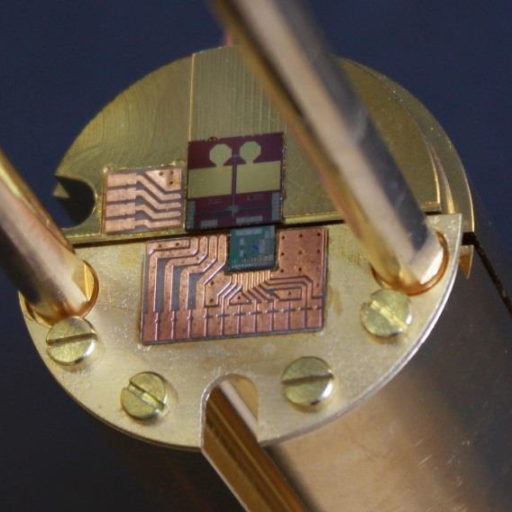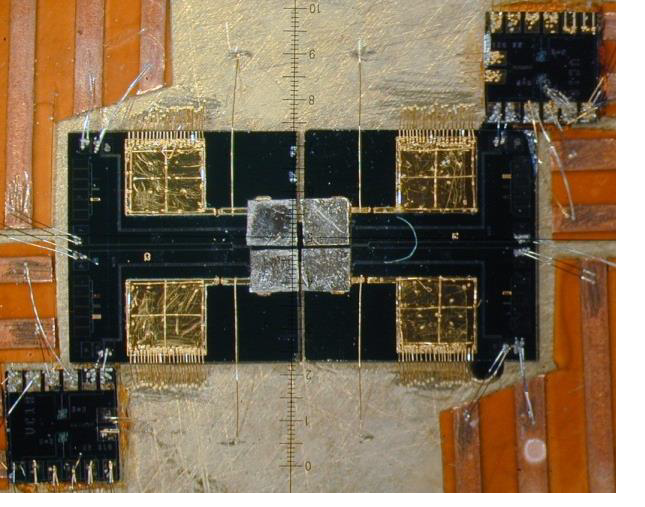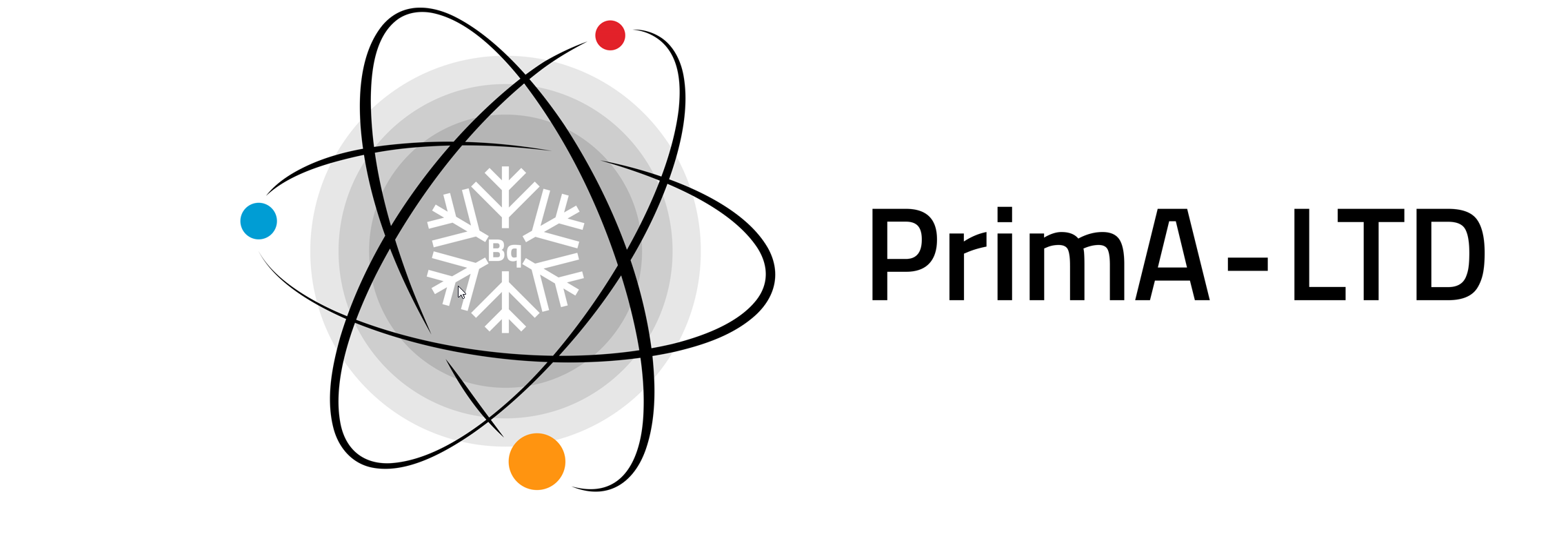




Need
The composition of radioactive sources used in industry, such as for nuclear medicine, is not easy to determine. NMIs and DIs follow the ever-changing and increasing demands of emerging radionuclides since each new entrant requires a specifically adapted standardisation procedure. This is important for low-energetic decays since their strong model dependence makes standardisation difficult, resulting in high uncertainties. A solution to this problem is to use Low Temperature Detectors (LTDs) due to extremely low energy thresholds (down to a few 10 eV) and versatility with all decays. LTDs offer the possibility to be used as a universal tool for activity standardisation.
The second pillar of radionuclide metrology is the determination of nuclear decay data. The most effective way to accurately determine decay data is to use recently developed theoretical models. Although the newer models include more detailed effects of the underlying nuclear and atomic physics, they still do not cover all types of decays, such as the 2nd forbidden non-unique decay of 129I. Additionally, the theory needs accurate experimental data for validation. LTDs can validate, by high-resolution, high statistics measurements in 4π geometry.
Objectives
The overall objective of the project is to improve the capabilities in radionuclide metrology, by developing a new primary activity standardisation method based on LTDs and improve on fundamental decay data.
The specific objectives of the project are:
- To develop a new primary method for decay scheme independent activity determination using low temperature detector-based spectrometers with a quantum efficiency of 100 %, high energy resolution and with the capability of processing measurement statistics which exceed 108 events / spectrum.
- To combine new source preparation techniques (e.g. ion implantation), and modern detectors (e.g. metallic magnetic calorimeters, etc.), in order to standardise one α emitter (241Am), one β emitter (129I) and one electron-capture nuclide (55Fe). This should aim to considerably reduce the uncertainty compared to existing methods.
- To develop a method for the measurement of 55Fe energy spectra with a better energy resolution and a lower energy threshold (< 50 eV) than existing techniques, to be used to determine fractional electron-capture probabilities. This should include determining L-subshell probabilities and a precise study of shake-up and shake-off effects. In addition, this approach should be used to determine the beta spectrum shape of 129I down to 0 keV.
- To compute beta spectrum shapes and electron capture decay using new calculation techniques, which consider all relevant effects from atomic and nuclear structure.
- To facilitate the take up of the technology and measurement infrastructure developed in the project by the measurement supply chain (NMIs, DIs, research laboratories) and users (authorities with responsibilities in radiation protection and environmental monitoring, researchers in allied fields).
Progress beyond the state of the art and results
Objective 1 and 3: Advanced MMC detectors and MMC-based spectrometers for radionuclide spectrometry and activity standardisation
Metallic magnetic calorimeters (MMC) have been used very successfully for 4π decay spectrometry for some years, and in radionuclide metrology. Up to now a single pixel MMC detector is permanently combined with a radionuclide source to be measured. A next generation of re-useable MMCs, where the radionuclide sources are non-permanently attached, combined with the appropriate analysis tools, will allow the use of MMCs in more common tasks in radionuclide metrology, namely in primary activity standardisation.
Another frontier is the accuracy of MMC measurements, that can be improved by increasing statistical power with larger event counts per measurement and by improving the already good energy resolution. These requirements can be fulfilled by multi-pixel MMC designs, fully optimised for one nuclide. To harness these improvements, the spectrometer setups used at PTB and CEA will be upgraded to allow measurements of at least 10 detector channels simultaneously.
Objective 2: Radioactive source preparation and primary activity standardisation
For the MMC measurements, the radionuclide needs to be fully enclosed in an absorber material, usually gold. During the preparation phase, both flexibility and performance will be enhanced by a two-way approach. Performance will be enhanced by employing a mass separator to selectively ion-implant only the wanted nuclide into the fully optimised multi-pixel MMC design and enclosing it afterwards. For the composite detectors, the absorber surface will be nano-structured, reducing the spectrum distortions, that are attributed to the decay radiation scattering in the source material.
Both preparation techniques will be used in a new absolute method for activity standardisation based on MMCs. This method will be less prone to systematic uncertainties and should be able to reach uncertainties in the order of 1 permille. This method will be used for one beta emitter (129I), electron capture nuclide (55Fe) and alpha decaying nuclide emitter (241Am) each and validated against established activity standardisation techniques.
Objective 3: High precision measurement of 55Fe and 129I spectra for accurate determination of decay data
Due to their high resolution, dynamic range, detection efficiency and good linearity, MMCs are extremely well suited for high precision measurements of decay spectra. Up to now, the comparison of the spectrum shape theoretical calculations and the fundamental decay parameters are often limited by the statistical uncertainty, because of the low counting statistics. By employing multi-pixel MMC arrays with at least 10 read-out channels, the statistics of the spectrum measurements of 55Fe and 129I will be increased to approximately 108 events. This in turn will allow to study the spectrum shape in more detail by looking at low probability effects, such as shake-up and shake-off.
Objective 4: Theoretical predictions of 129I beta spectrum and 55Fe electron capture decay
Describing the decay spectrum of the 55Fe electron capture, including higher order shake-up and shake-off effects, requires modelling not only of the occupied atomic states, but also of the unoccupied and continuum states, which will be done on the basis of the relativistic Density Functional Theory code. The 129I beta decay spectrum calculation over the whole energy range down to 0 keV is similarly challenging. Due to the second forbidden non-unique nature of the transition, this involves high precision handling of the decay itself (weak interaction), the nuclear structure (strong interaction) and the atomic structure (electromagnetic interaction). Finally, a comparison to the high statistics experimental data will be used to validate the model calculations.
Impact
Impact on industrial and other user communities
Many users of radioactive materials will benefit from improved nuclear decay data and more accurate activity determination. The nuclear power industry uses decay data to determine the residual heat and its evolution with time in nuclear reactors and in nuclear waste management. Results of environmental monitoring of radioactivity will also be able to reduce uncertainties by using decay data with smaller uncertainties.
Nuclear medicine and the use of radiopharmaceuticals will also profit. More accurate decay data allow a more accurate calculation of the dose per administered activity, whose determination will also become more accurate with the results of this project.
While the nuclides investigated in this project are not of specific interest in industry or medicine, the newly developed and validated theoretical models will cover nuclides in these applications.
Impact on the metrology and scientific communities
The development of a completely new method for primary activity determination will be a great benefit for radionuclide metrology, since it will lower the achievable uncertainties by up to an order of magnitude. Some nuclides, such as 7Be, that have not been standardised yet might also be accessible with this method.
Advanced theoretical calculations of decay spectra and their validation with high resolution, high statistics data of the 55Fe electron capture and 129I beta decay down to lowest energies, will benefit the accuracy of decay data in general. This decay data, based on the broadly applicable theoretical models, is not only used in
metrology, but, for example, also in the calculation of neutrino spectra, especially from nuclear reactors for the determination of neutrino oscillation parameters or the search of non-weak interacting (sterile) neutrinos. Background estimation of low-background experiments, such as the search for dark matter reaching beyond the standard model of particle physics, also rely on accurate decay data.
The developments in MMC technology, from fabrication, to data acquisition and data processing of multi-channel spectrometers will also not only benefit the contributing partners, but also the LTD community as whole.
Impact on relevant standards
The project will lead to improved nuclear decay data by direct measurements and by improving the theoretical calculation techniques. Hence, the outcome of this project will be a valuable contribution for nuclear decay data evaluations. Publications and tables with recommended data play a key role for research and many applications and are also a basis for international standards.
Longer-term economic, social and environmental impacts
The wider dissemination of the MMCs and similar LTD technologies can and will have large impact on research, medicine and industry. In X-ray spectrometry, LTDs can combine high resolution and high energy bandwidth, that classically require two different detector systems. Nuclear forensics and nuclear safeguards can be made more accessible, since the high resolution of LTDs allows radiochemical preparations before measurements to be omitted and can combine the capabilities usually obtained separately from alpha- and mass-spectrometry in a single measurement.
The use and benefit in nuclear power industry, environmental monitoring and nuclear medicine, will also continue on a long-term, both from the improved decay data and better activity standardisation with the inevitable wider adoption of LTD technology.
